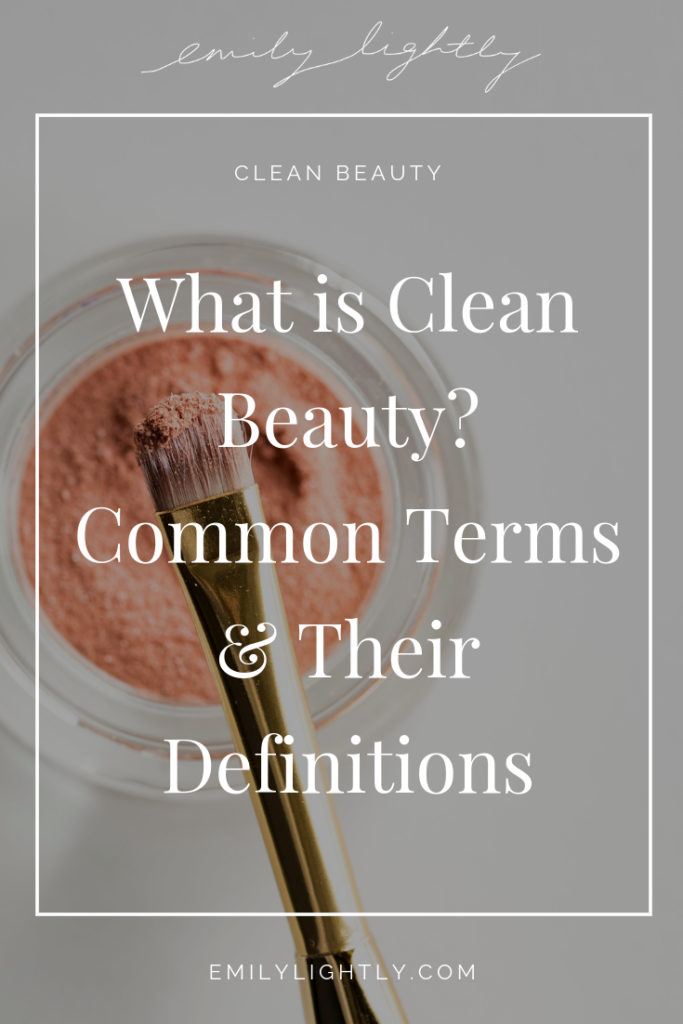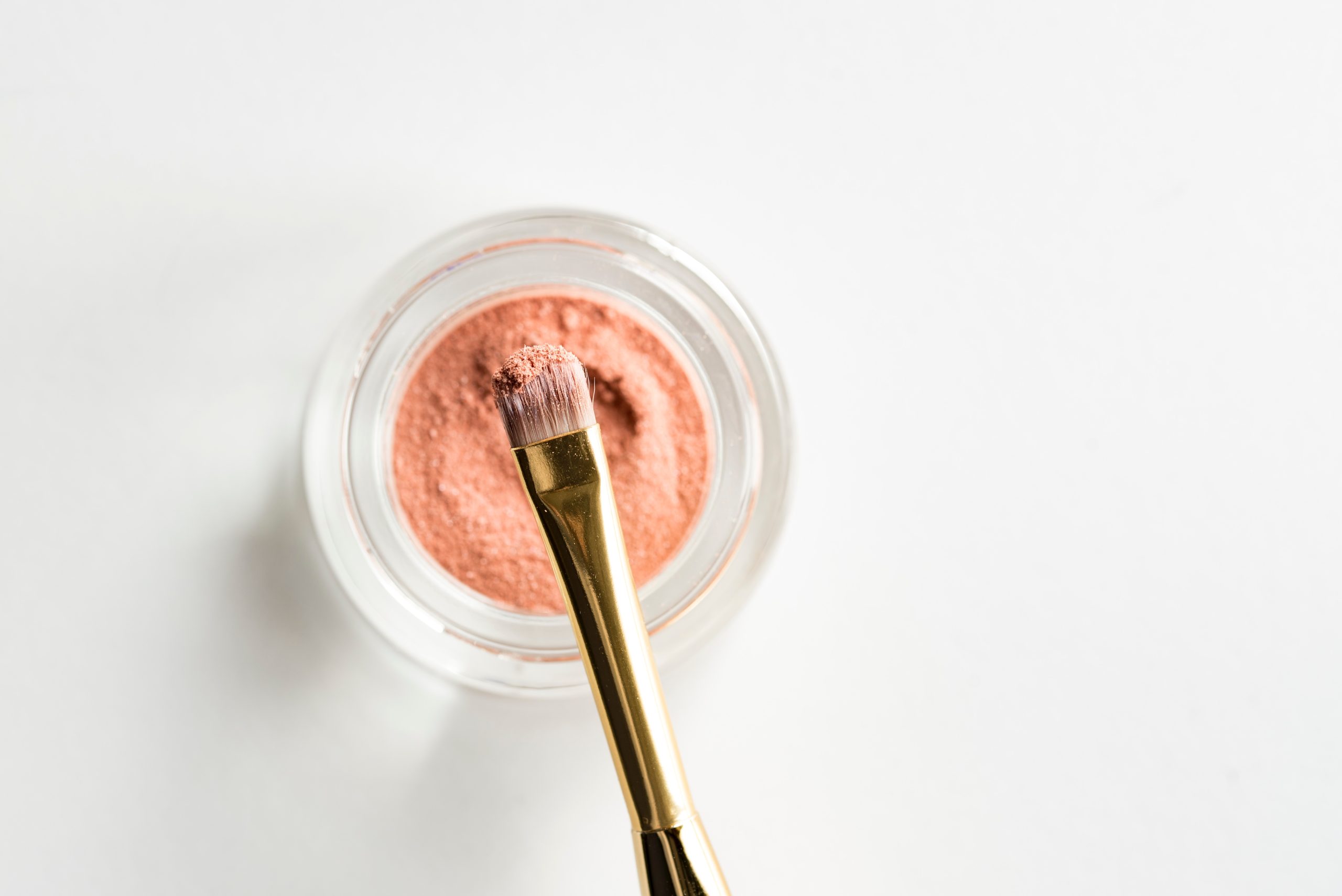As I’ve been moving towards simplifying my makeup routine, I’m focusing more on what’s in the products I buy and how they’re made. However, I’ve found that it’s actually not so simple. There are a lot of terms that brands use when talking about clean beauty which become muddled, so it’s hard to know if what you’re buying aligns with your values. In an attempt to more clearly define what I’m looking for when I restock my makeup bag, I did some research to clarify some of the terminology around clean beauty. Here are some of the most common clean beauty terms and their definitions.
Note that these definitions are just what I have come to understand based on my own research. If you disagree with anything or feel I’ve got it wrong, let me know in the comments below!
Vegan
Free of animal ingredients. Basically, nothing in the product came from an animal. There are actually a lot of ingredients commonly found in cosmetics that are derived from animals – here’s a handy list of the top 10. After reading the list, non-vegan beauty sounds pretty unappetizing to me!
Cruelty-Free
Generally, this means that the product is not tested on animals. PETA has a super useful brand checker to see whether they are certified cruelty-free are not. Apparently, any brands that are sold in China are not cruelty-free because animal testing for cosmetic products is required there. It’s also important to mention that a product can be vegan, but that doesn’t mean it’s cruelty-free. These terms are not interchangeable, so it’s important to check a brand’s disclaimer to ensure its production processes match what you’re looking for.
Natural
From what I can tell, any product calling itself ‘natural’ is made with ingredients occurring in nature, like fruits, vegetables, oils, and minerals. It should not contain any chemical, synthetic, or artificial ingredients. However, many products that claim to be natural get away with it because they are including a few natural ingredients, but are still mainly made up of chemicals. The best way to ensure you’re getting a 100% natural product is to make it at home with a good DIY recipe (Pinterest is full of them!)
Organic
This usually means that a product is made using natural ingredients grown or farmed without the use of things like pesticides, GMOs, and other synthetic or chemical products. It’s very similar to when you’re at the grocery shop and looking at organic produce. Brands should put the percentage of organic ingredients in the product on the packaging. As far as I understand, organic food products may be regulated by your country’s food industry, which is separate from cosmetics and beauty products. However, for a cosmetic product to obtain the organic certification, they must pass the regulations laid out under the food industry. Here’s an article from the FDA that explains this in more detail, at least when it comes to beauty products in the US.
Clean or Green
Now we finally come to the term ‘clean beauty’. I’ve also heard ‘green beauty’ thrown around in the same context. I think this is quite similar to natural beauty in that products saying they are ‘clean’ are typically free of harsh or toxic chemicals. While there may be chemical or artificial ingredients, the brands have hopefully stayed away from those proven to be harmful and instead use ingredients with little or no negative impact on our bodies. These products are generally made with the consumer’s health in mind.
Sephora recently added a ‘clean seal’ to their makeup which lets you know that a product has been made without those chemicals that we should be avoiding. Things like parabens, sulfates, and phthalates are commonly mentioned, but they have an entire list on their website that they guarantee each product with the seal will not have. This is really helpful if you’re trying to transition over to a cleaner beauty regime but haven’t done much research on products or brands, and just want to know whether something is safe to use or not.
Non-Toxic
Again, this term is very similar to clean or green beauty. Products purporting to be non-toxic should avoid ingredients that have been proven to have harmful effects on our bodies and health. My rule of thumb is that if the packaging lists a whole bunch of ingredients that I can’t even pronounce, it’s likely got some harsher chemicals in it. If you’re like me and you’re not familiar with the wide variety of toxins out there, you can search up the ingredients on the internet before you buy. There’s also a handy app called Think Dirty that lets you scan items and tells you how carcinogenic they are (and therefore unsafe to use) on a scale of 1-10.
Sustainable
This refers to a product that is made in an eco-friendly way, both in how it’s made and how it can be discarded. Typically, the products and their packaging are one or more of the following: recycled, recyclable, reusable, or compostable. It can also refer to a company’s production processes having a lower impact on the environment.
Zero-Waste
Zero-waste is similar to sustainable beauty, but I feel it takes it a step further. It includes products that are free of wasteful packaging or that come with re-fillable packaging. A good example of this is soap and shampoo bars from Lush, many of which you can buy from the store with no packaging.
Ethical
This one is still a bit muddy for me and can mean a lot of different things. On one hand, it can mean that the product contains ethically-sourced ingredients (i.e. that the ingredients were sourced in an environmentally-responsible way, the ingredients are certified fair trade, etc.) It can also be related to cruelty-free in that it is produced in an ethical way (i.e. not tested on animals).
7-Free
Mainly used in terms of nail products, ‘7-free’ describes products that are made without the 7 most common toxic/harsh chemicals found in nail polishes. Some products also use 3-free or 5-free. But, because 7-free means that more chemicals are excluded, I typically look for that when I’m considering buying a new polish. More information on the different levels of this term and which chemicals are excluded can be found here.
At the end of the day, my goal is to ensure my makeup bag includes only products that aren’t harmful to myself or the environment, and are made by reputable brands in a sustainable and ethical way. Finding companies that meet all of this criteria can be tough, although there are a few really good ones out there. Knowing what each of these terms means when a brand uses them should help us determine where we draw the line and what products we spend our hard-earned money on.
I hope you found this post interesting and informative! Let me know your thoughts in the comments below.
Thanks for reading,
Emily
Pin for later:

Featured photo by Joanna Kosinska on Unsplash


This is an excellent article. Really helped me to understand what the different terms mean. Never heard of 7 free before. Thanks Emily!!